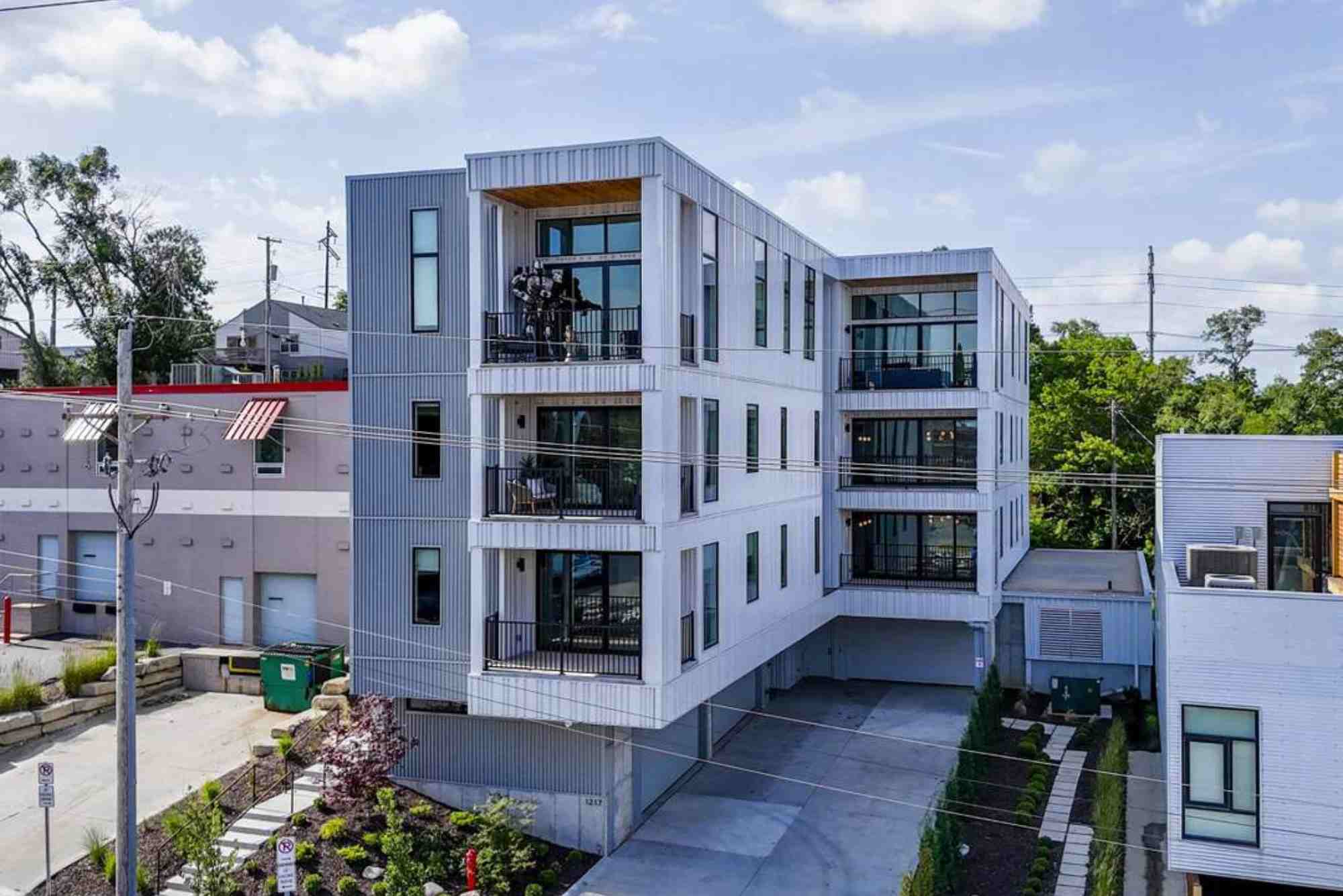Apartment Buildings for Sale Omaha: A Guide for Investors
Investing in apartment buildings for sale in Omaha can be a smart move for both seasoned and first-time real estate investors. Omaha, Nebraska, offers a thriving rental market, affordable real estate compared to coastal cities, and a growing economy that attracts families, students, and young professionals alike. Whether you’re eyeing multifamily units in the downtown core or suburban apartment complexes, Omaha provides a variety of opportunities for solid returns on investment.
This guide walks you through everything you need to know about buying apartment buildings in Omaha — from understanding the market and evaluating properties to financing and long-term management. Let’s explore why this Midwestern gem is drawing more attention from smart investors nationwide.
Why Omaha Is a Promising Market for Apartment Building Investments
The Omaha real estate market offers a unique blend of affordability, demand, and economic growth. While larger cities experience volatile pricing and competition, Omaha provides more stability and consistent demand for rental units. With a population of over 500,000 and a metropolitan area nearing 1 million, the city shows steady growth and low unemployment. Omaha’s job market is supported by sectors like healthcare, education, technology, finance, and transportation.
One of the key attractions for investors is the relatively low entry cost. Apartment buildings for sale in Omaha typically have lower price tags than similar properties in cities like Denver, Chicago, or Minneapolis. This affordability translates into better cap rates and faster cash flow generation. Additionally, Omaha has a favorable landlord-tenant law climate, which is often cited as more investor-friendly than many coastal areas.
Key Factors to Consider When Buying Apartment Buildings in Omaha
Before you purchase a multifamily property in Omaha, it’s essential to evaluate several important factors that influence both short-term returns and long-term appreciation.
Location and Neighborhood Trends
Not all parts of Omaha offer the same investment potential. Central Omaha neighborhoods like Benson, Aksarben, and Midtown attract young professionals and renters who prefer proximity to jobs, entertainment, and education. These areas often show stronger rental demand and higher rent rates. In contrast, South Omaha or older parts of North Omaha might offer lower acquisition prices but require more renovation and strategic management.
Studying local neighborhood trends is key. Look at crime rates, school quality, access to transit, and new infrastructure developments. Areas undergoing revitalization may provide value-add opportunities where you can buy low, improve the property, and increase rents.
Property Type and Condition
Apartment buildings in Omaha range from small duplexes and fourplexes to larger 20+ unit complexes. The right choice depends on your investment goals, risk tolerance, and management experience. Smaller buildings might be easier to finance and manage, while larger ones offer economies of scale and higher revenue potential.
Always conduct a thorough inspection. Look for issues like outdated plumbing, roofing problems, electrical concerns, or pest control needs. Even if the property seems cash-flow positive, hidden maintenance costs can quickly erode your ROI.
Rental Demand and Vacancy Rates
Rental demand in Omaha is driven by several factors: university students, hospital workers, tech startups, and military personnel at Offutt Air Force Base. According to local housing reports, Omaha’s vacancy rate generally stays below the national average, often hovering around 5% or lower. This means well-maintained and competitively priced units tend to stay occupied year-round.
Check the average rent in the neighborhood you’re targeting. Sites like RentCafe, Zumper, or local MLS listings can help you gauge the going rate for one-bedroom, two-bedroom, and three-bedroom apartments.
Financial Performance and Cap Rate
When analyzing apartment buildings for sale in Omaha, focus on their net operating income (NOI), cap rate, and potential for rental growth. The cap rate — calculated by dividing NOI by the purchase price — gives a quick snapshot of investment return. In Omaha, cap rates typically range between 6% to 8%, depending on the property’s location, condition, and size.
Also, don’t forget to account for taxes, insurance, property management fees, and reserves for repairs. A property may look attractive on paper but offer thin margins if operating expenses are underestimated.
Financing Your Omaha Apartment Building Investment
Financing options for apartment buildings vary depending on the property size and your experience as an investor. For small multifamily properties (2–4 units), conventional loans from local banks or credit unions may suffice. These loans typically require a 20–25% down payment and solid credit history.
For larger apartment complexes (5+ units), investors often seek commercial real estate loans, which are evaluated based on the income the property generates rather than your personal income. Lenders assess the property’s debt service coverage ratio (DSCR) to ensure the building can cover loan payments.
Some investors also turn to private lenders or syndication models, especially if they plan to renovate and increase value over time. In Omaha, community banks are often open to financing local real estate investments, especially if you have a strong business plan and local property management in place.
Working with Local Real Estate Professionals
Navigating the Omaha real estate market can be much easier with the help of experienced professionals. Look for real estate agents or brokers who specialize in multifamily and investment properties. They often have access to off-market deals, insights into neighborhood trends, and relationships with local lenders, inspectors, and property managers.
Legal and financial advisors can help you structure your investment properly — whether as an LLC, partnership, or sole proprietorship. A CPA with real estate experience can guide you on tax advantages, depreciation schedules, and expense write-offs.
How to Add Value to Your Omaha Apartment Investment
Value-add strategies are common among Omaha investors. These involve purchasing underperforming or outdated properties and improving them to boost rent and value. Examples of value-add improvements include:
Upgrading kitchens and bathrooms with modern fixtures
Adding amenities like in-unit laundry or secured parking
Improving energy efficiency with better insulation or new windows
Rebranding the property with new signage, paint, or landscaping
Streamlining operations by reducing vacancies, cutting utility costs, or switching property management
Value-add plays work particularly well in emerging neighborhoods or areas close to job centers and universities.
Long-Term Management and Exit Strategies
Successful apartment investment doesn’t stop after purchase. You’ll need to manage the property efficiently to maintain cash flow and grow equity. Many investors in Omaha use third-party property managers who handle tenant screening, leasing, maintenance, and rent collection.
You should also develop a clear exit strategy from the beginning. Whether you plan to hold the property for long-term cash flow, refinance after renovations, or sell after 5–10 years of appreciation, your strategy should align with your financial goals.
Tracking local market trends and monitoring key metrics like rent growth, vacancy rates, and interest rates can help you make informed decisions on when to exit or reinvest.
Is Omaha Right for Your Next Apartment Investment?
Omaha presents a compelling opportunity for real estate investors seeking steady income and long-term growth. The city’s affordable real estate prices, strong rental demand, and stable economy create a favorable environment for apartment building investments. Whether you’re looking to buy your first duplex or expand your multifamily portfolio, Omaha offers attractive returns with less volatility than larger, saturated markets.
If you’re serious about exploring apartment buildings for sale Omaha, start by defining your goals, researching neighborhoods, and connecting with local experts. Take action now — Omaha’s market won’t stay under the radar forever.
FAQ
What is the average cost of an apartment building in Omaha?
The average cost varies based on size, location, and condition. Smaller fourplexes might start around $300,000, while larger 20+ unit buildings can range from $1 million to $3 million.
Is Omaha a good place to invest in real estate?
Yes. Omaha offers high occupancy rates, strong rental demand, affordable property prices, and a growing economy — all of which make it attractive for real estate investors.
How can I find apartment buildings for sale in Omaha?
You can use MLS listings, commercial real estate websites like LoopNet or Crexi, or work with a local multifamily real estate agent to discover off-market opportunities.
What type of apartment buildings are most common in Omaha?
Omaha has a mix of duplexes, triplexes, fourplexes, and larger apartment complexes. Older brick buildings are common in central areas, while newer units are found in suburban developments.
How much rental income can I expect in Omaha?
Rental income depends on unit size and location. On average, one-bedroom units rent for $900–$1,100 per month, while two-bedroom units fetch $1,100–$1,400 or more.





